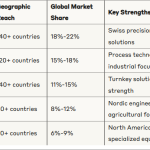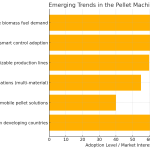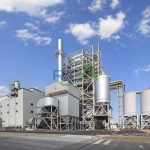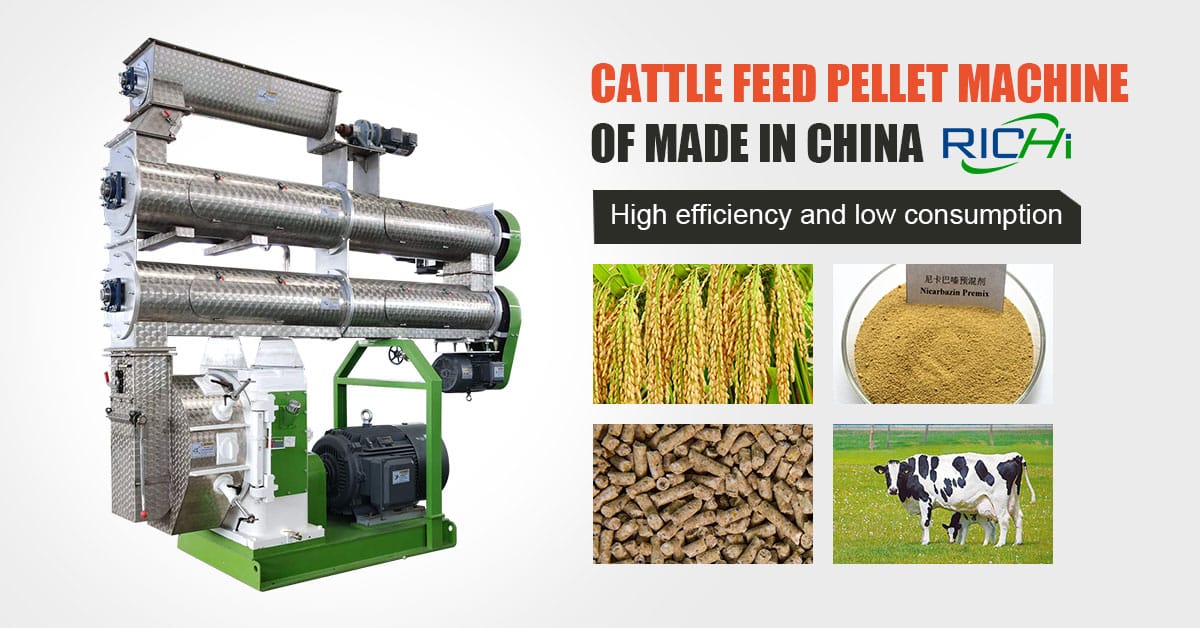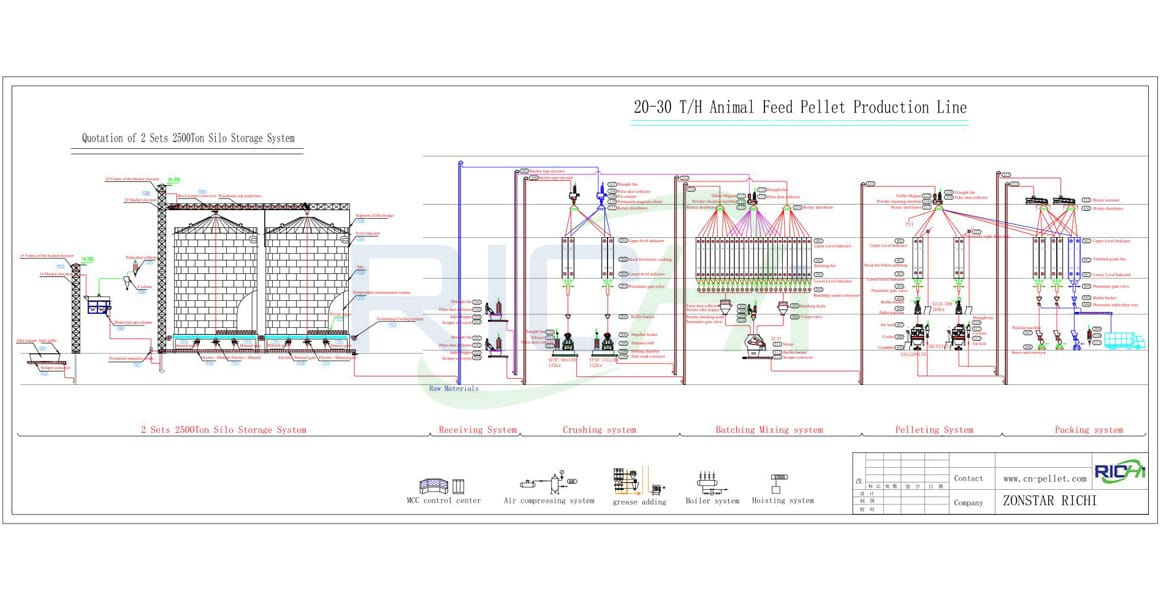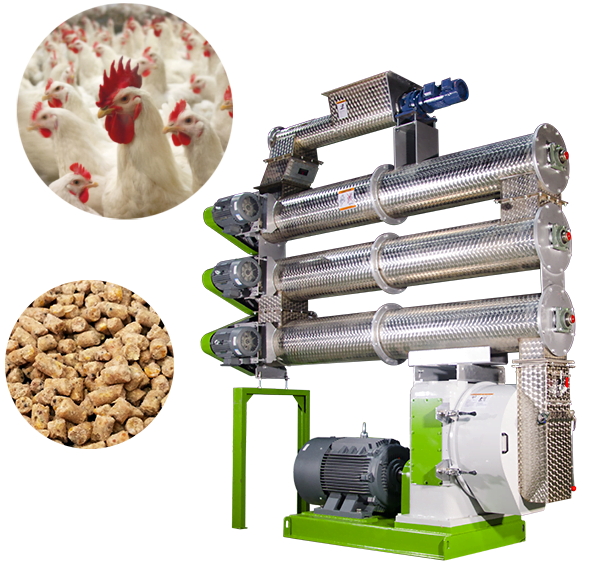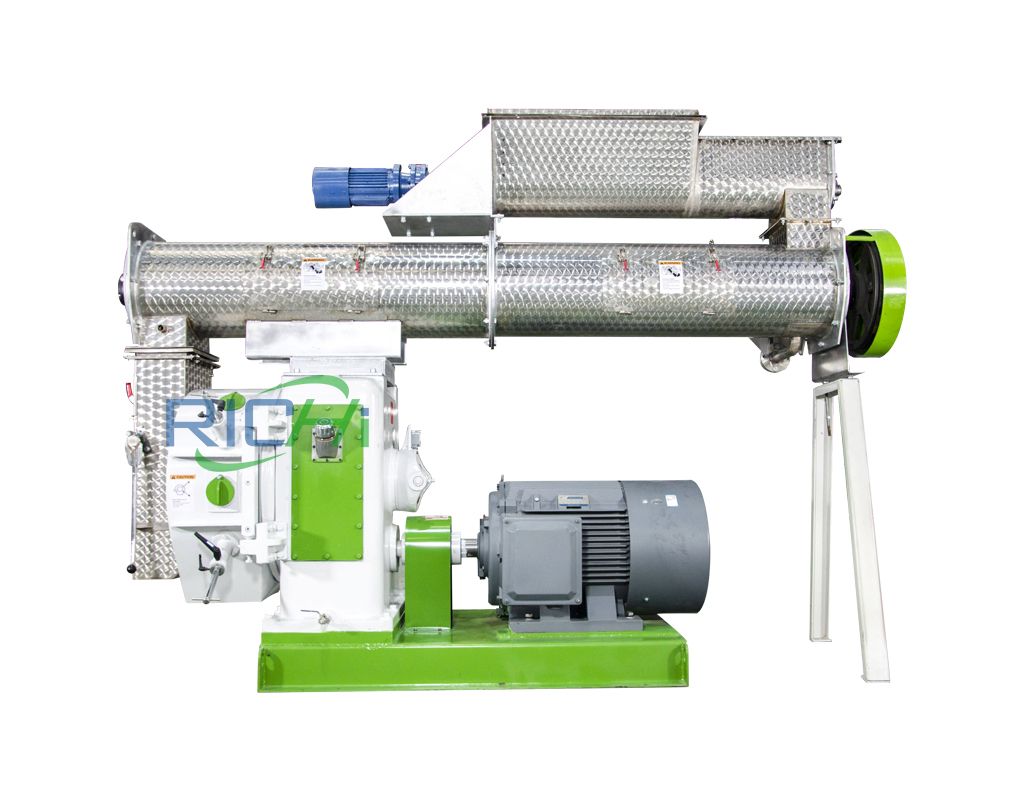Ring die livestock feed pellet machines have become increasingly popular in the animal feed industry due to their ability to produce high-quality feed pellets. The superior quality of feed processed by these machines can be attributed to several factors inherent in their design and operation. This article explores the reasons why ring die pellet machines produce better quality feed compared to other pelletizing methods.
- Uniform Pellet Size and Shape
One of the primary advantages of ring die pellet machines is their ability to produce pellets with consistent size and shape:
- The circular die design ensures that all pellets pass through holes of identical diameter and length.
- The rotating die and stationary rollers create a uniform pressure distribution across the entire die surface.
- This consistency in pellet size and shape leads to improved feed intake and digestion by livestock.
- Higher Compression Ratio
Ring die pellet machines typically achieve higher compression ratios compared to flat die machines:
- The curved surface of the ring die allows for a longer compression zone.
- This extended compression zone results in denser pellets with improved durability.
- Higher density pellets are less prone to breakage during handling and transportation, reducing feed waste.
- Enhanced Starch Gelatinization
The pelletizing process in ring die machines promotes better starch gelatinization:
- The combination of heat, moisture, and pressure in the die cavity facilitates starch gelatinization.
- Gelatinized starch acts as a natural binder, improving pellet durability and digestibility.
- This process enhances the nutritional value of the feed by making carbohydrates more accessible to the animals.
- Improved Nutrient Binding
Ring die pellet machines are effective at binding nutrients within the pellets:
- The high pressure and temperature in the die cause proteins to partially denature, creating cross-links that bind feed particles together.
- This binding effect helps retain vitamins and minerals within the pellet structure.
- As a result, the feed maintains its nutritional integrity during storage and feeding.
- Better Moisture Control
The design of ring die machines allows for superior moisture control during the pelletizing process:
- Steam conditioning can be precisely controlled to achieve optimal moisture content.
- The centrifugal force in the die chamber helps distribute moisture evenly throughout the feed mixture.
- Proper moisture control leads to better pellet formation and reduced energy consumption during the process.
- Reduced Fines Production
Feed processed by ring die pellet machines typically contains fewer fines (small particles and dust):
- The high compression and shear forces in the die effectively bind small particles into the pellet structure.
- The scraper mechanism in ring die machines helps reincorporate any fines back into the pelletizing process.
- Reduced fines mean less feed waste and improved feed conversion ratios for livestock.
- Enhanced Feed Palatability
The pelletizing process in ring die machines can improve the palatability of the feed:
- The heat and pressure involved in pelletizing can enhance the flavor profile of the feed ingredients.
- The uniform pellet size makes the feed more appealing to animals, potentially increasing feed intake.
- Improved palatability can lead to better growth rates and overall animal performance.
- Efficient Heat Treatment
Ring die pellet machines provide an effective means of heat treating feed ingredients:
- The combination of steam conditioning and friction-generated heat in the die can eliminate harmful pathogens.
- This heat treatment can improve feed safety by reducing the risk of bacterial contamination.
- Additionally, heat treatment can inactivate certain anti-nutritional factors present in some feed ingredients.
- Flexibility in Ingredient Incorporation
The design of ring die pellet machines allows for greater flexibility in incorporating diverse ingredients:
- These machines can handle a wide range of ingredients, from grains to fibrous materials and protein sources.
- The high compression forces enable the incorporation of liquid additives, such as oils or molasses, without compromising pellet quality.
- This flexibility allows for the production of custom feed formulations tailored to specific livestock requirements.
- Improved Feed Conversion Ratio
The overall quality improvements in feed processed by ring die pellet machines contribute to better feed conversion ratios:
- The enhanced digestibility of gelatinized starch and denatured proteins leads to more efficient nutrient utilization.
- Reduced feed waste due to improved pellet durability means more of the feed is actually consumed by the animals.
- These factors combined result in better growth rates and feed efficiency in livestock.
- Consistent Production Quality
Ring die pellet machines offer more consistent production quality over extended operating periods:
- The continuous rotation of the die helps maintain a stable temperature and pressure environment.
- This consistency leads to uniform pellet quality throughout the production run.
- Stable production quality ensures that all batches of feed meet the same high standards.
- Energy Efficiency
While ring die pellet machines may have higher initial energy requirements, they often prove more energy-efficient in the long run:
- The efficient compression and extrusion process reduces the overall energy needed to produce a given quantity of pellets.
- The ability to process a wide range of moisture contents allows for optimization of energy use in drying and cooling.
- Improved pellet quality means less need for reprocessing, further saving energy.
Conclusion
The superior quality of feed processed by ring die livestock feed pellet machines is the result of a combination of factors inherent in their design and operation. From uniform pellet size and enhanced nutrient binding to improved palatability and feed conversion ratios, these machines offer significant advantages in feed production.
The ability to produce high-quality, durable pellets with consistent nutritional value makes ring die pellet machines an invaluable tool in modern livestock feed production.
As the demand for efficient and high-performance animal feeds continues to grow, the role of ring die pellet machines in ensuring feed quality is likely to become even more critical.For livestock producers and feed manufacturers, investing in ring die pellet machines can lead to improved animal performance, reduced feed waste, and ultimately, better economic outcomes. As technology continues to advance, we can expect further improvements in ring die pellet machine design, potentially leading to even higher quality feed products in the future.


